
Cyberpunk is a subgenre of science fiction in a dystopian futuristic setting that tends to focus on a "combination of lowlife and high tech", featuring futuristic technological and scientific achievements, such as artificial intelligence and cyberware, juxtaposed with societal collapse, dystopia or decay. Much of cyberpunk is rooted in the New Wave science fiction movement of the 1960s and 1970s, when writers like Philip K. Dick, Michael Moorcock, Roger Zelazny, John Brunner, J. G. Ballard, Philip José Farmer and Harlan Ellison examined the impact of drug culture, technology, and the sexual revolution while avoiding the utopian tendencies of earlier science fiction.
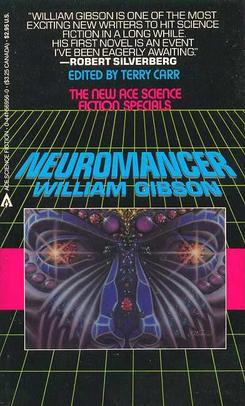
Neuromancer is a 1984 science fiction novel by American-Canadian writer William Gibson. Considered one of the earliest and best-known works in the cyberpunk genre, it is the only novel to win the Nebula Award, the Philip K. Dick Award, and the Hugo Award. It was Gibson's debut novel and the beginning of the Sprawl trilogy. Set in the future, the novel follows Henry Case, a washed-up hacker hired for one last job, which brings him in contact with a powerful artificial intelligence.
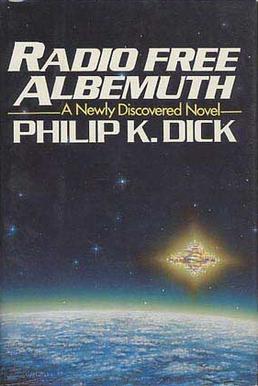
Radio Free Albemuth is a dystopian novel by Philip K. Dick, written in 1976 and published posthumously in 1985. Originally titled VALISystem A, it was his first attempt to deal in fiction with his experiences of early 1974. When his publishers at Bantam requested extensive rewrites he canned the project and reworked it into the VALIS trilogy. Arbor House acquired the rights to Radio Free Albemuth in 1985. They then published an edition under the current title, prepared from the corrected typescript given by Dick to his friend Tim Powers.

William Ford Gibson is an American-Canadian speculative fiction writer and essayist widely credited with pioneering the science fiction subgenre known as cyberpunk. Beginning his writing career in the late 1970s, his early works were noir, near-future stories that explored the effects of technology, cybernetics, and computer networks on humans—a "combination of lowlife and high tech"—and helped to create an iconography for the information age before the ubiquity of the Internet in the 1990s. Gibson coined the term "cyberspace" for "widespread, interconnected digital technology" in his short story "Burning Chrome" (1982), and later popularized the concept in his acclaimed debut novel Neuromancer (1984). These early works of Gibson's have been credited with "renovating" science fiction literature in the 1980s.

The Legacy of Heorot is a science fiction novel by American writers Larry Niven, Jerry Pournelle, and Steven Barnes, first published in 1987. Reproduction and fertility expert Dr Jack Cohen acted as a consultant on the book, designing the novel life cycle of the alien antagonists, the grendels.

Equal Rites is a comic fantasy novel by Terry Pratchett. Published in 1987, it is the third novel in the Discworld series and the first in which the main character is not Rincewind. The title is wordplay on the phrase "Equal Rights".
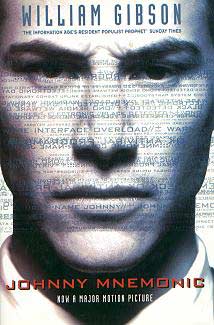
"Johnny Mnemonic" is a science fiction short story by American-Canadian writer William Gibson. It first appeared in Omni magazine in May 1981, and was subsequently included in Burning Chrome, a 1986 collection of Gibson's short fiction. It takes place in the world of Gibson's cyberpunk novels, predating them by some years, and introduces the character Molly Millions, who plays a prominent role in the Sprawl trilogy of novels.
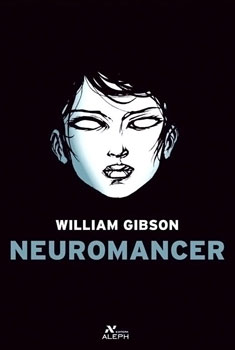
Molly Millions is a recurring character in stories and novels written by William Gibson, particularly his Sprawl trilogy. She first appeared in "Johnny Mnemonic", to which she makes an oblique reference in Neuromancer. She later appeared in Mona Lisa Overdrive under the name "Sally Shears".
"The Belonging Kind" is a science fiction short story by cyberpunk authors William Gibson and John Shirley. It was first published in the horror anthology Shadows 4 edited by Charles L. Grant in 1981, later to be included along with several other stories in Gibson's collection Burning Chrome.

The Alternate Asimovs (1986) is a collection of early science fiction drafts by American writer Isaac Asimov. Asimov mostly threw away early drafts. Just a few survived and were included in this anthology.
"The Gernsback Continuum" is a 1981 science fiction short story by American-Canadian author William Gibson, originally published in the anthology Universe 11 edited by Terry Carr. It was later reprinted in Gibson's collection Burning Chrome, and in Mirrorshades, edited by Bruce Sterling. With some similarity to Gibson's later appraisal of Singapore for Wired magazine in Disneyland with the Death Penalty, as much essay as fiction, it depicts the encounters of an American photographer with the period futuristic architecture of the American 1930s when he is assigned to document it for fictional London publishers Barris-Watford, and the gradual incursion of its cinematic future visions into his world. The "Gernsback" of the title alludes to Hugo Gernsback, the pioneer of early 20th century American pulp magazine science fiction.

The works of William Gibson encompass literature, journalism, acting, recitation, and performance art. Primarily renowned as a novelist and short fiction writer in the cyberpunk milieu, Gibson invented the metaphor of cyberspace in "Burning Chrome" (1982) and emerged from obscurity in 1984 with the publication of his debut novel Neuromancer. Gibson's early short fiction is recognized as cyberpunk's finest work, effectively renovating the science fiction genre which had been hitherto considered widely insignificant.

Dr. Adder is a dark science fiction novel by American writer K. W. Jeter, set in a future where the United States has largely broken down into reluctantly cooperating enclaves run by a wide variety of strongmen and warlords, with a veneer of government control that seems largely interested in controlling technology. Dr. Adder is an artist-surgeon, who modifies sexual organs of his patients to satisfy the weirdest of perversion; he is clearly depicted as a partly criminal, partly counter-cultural figure in a future Los Angeles. The novel anticipates various cyberpunk ideas that would be established by the Sprawl trilogy written by William Gibson, as well as other works of that science fiction genre.
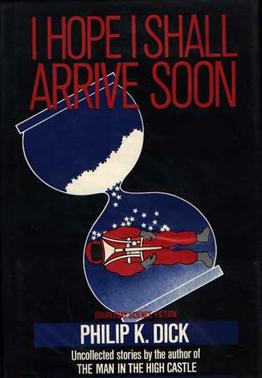
I Hope I Shall Arrive Soon is a book by American writer Philip K. Dick, a collection of 10 science fiction short stories and one essay. It was first published by Doubleday in 1985 and was edited by Mark Hurst and Paul Williams. Many of the stories had originally appeared in the magazines Fantasy and Science Fiction, Worlds of Tomorrow, Amazing Stories, Interzone, Rolling Stone College Papers, The Yuba City High Times, Omni and Playboy.
"Burning Chrome" is a science fiction short story by Canadian-American writer William Gibson, first published in Omni in July 1982. Gibson first read the story at a science fiction convention in Denver, Colorado in the autumn of 1981, to an audience of four people, among them Bruce Sterling. It was nominated for a Nebula Award in 1983 and collected with the rest of Gibson's early short fiction in a 1986 volume of the same name.
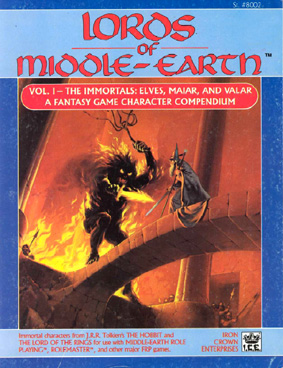
Lords of Middle-earth, Volume I is a 1986 fantasy role-playing game supplement published by Iron Crown Enterprises for Middle-earth Role Playing.

Mathenauts: Tales of Mathematical Wonder is a 1987 anthology edited by Rudy Rucker and published by Arbor House.
Under the Wheel is a novel anthology compiled by Elizabeth Mitchell and published by Baen Books in 1987.
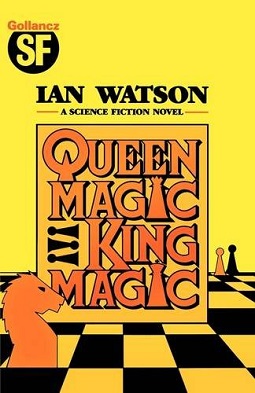
Queenmagic, Kingmagic is a novel by Ian Watson published in 1986.















